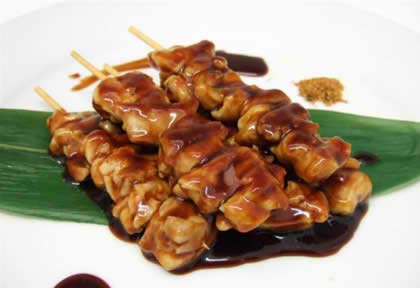 |
| This is the most basic and simplest cooked pasta sauce, hence it is the benchmark of a good Italian home cook. |
 |
| Focaccia Bread
Fresh dough is topped with caramelized onions, olives, tomato slices, basil leaves, grated parmesan cheese and baked delicious!
|
 |
| Margherita Pizza
Fancy
a pipping hot pizza, fresh out of the oven? One of
the most loved Italian dishes.
|
 |
| Bruschetta
Country
bread sliced and topped with different toppings - the evergreen
tomato-basil and an inventive mushroom-garlic. The classic Italian
starter!
|
 |
| Pasta Carbonara
This
simple Roman pasta dish derives its name from 'carbone' meaning coal.
It was a pasta popular with the coal miners. The original recipe calls
for guanciale, which is pig's cheek, but since its not easily available,
the chef has used bacon instead.
|
 |
| Panna Cotta With Raspberry Coulis
End
your meals, the Italian way! A dessert is made with gelatine, cream and
milk. Chilled and served with whole raspberries and raspberry coulis.
Panna Cotta, in Italian, means 'cooked cream.'
|
 |
| Tiramisu - The 'pick-me-up' cake
The
delightful tiramisu recipe with sponge fingers soaked in coffee,
layered around and smeared with a creamy mascarpone mixture. The word
'tiramisu' in Italian means 'pick-me-up'. Owing to its caffeine kick it
sure does!
REFERENCE: http://cooks.ndtv.com/article/show/10-best-italian-recipes-367558 |









